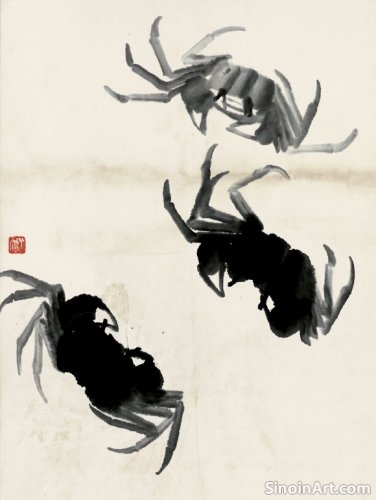The Influence of Confucianism on Xieyi
|
While Daoism and Chan Buddhism are often cited as the main influences on Xieyi, Confucianism also plays a more subtle, yet important, role in the development and values of the art form. Confucianism, with its emphasis on social harmony, ethical conduct, and the cultivation of character, has shaped the cultural context in which Xieyi painting emerged.  Confucianism values the idea of self-cultivation, urging individuals to strive for moral and intellectual excellence. This ideal resonates with the pursuit of mastery and personal development that is central to the practice of Xieyi. The process of learning is viewed as a process of personal growth.  The Confucian emphasis on social harmony and order can be seen in the appreciation of balance and composition in Xieyi paintings. Artists often seek to create works that are both aesthetically pleasing and ethically sound, reflecting the values of the society in which they live. It should be pleasing to the eye, but should also have inner meaning.  The Confucian ideal of the gentleman scholar, a person of both moral integrity and artistic talent, has shaped the role of the literati artist in China. Xieyi painters often see themselves as both artists and scholars, striving to create works that are both beautiful and meaningful. The artists act as cultural and social leaders. The Confucian concept of "Li" (禮), or ritual propriety, can also be seen in the traditional practices and protocols associated with Xieyi, from the careful preparation of materials to the respectful handling of the finished artwork. The rituals that surround the art form contribute to its overall significance. |
Tag : Confucianism in art, Chinese ethics, social harmony, self-cultivation, literati values
Related information
- The Essence of Xieyi: Capturing the Spirit
- Xieyi Painting and the Use of "Splash Ink"
- The Significance of Composition in Xieyi
- Xieyi Painting and the Use of "Boneless Technique" ( Mògǔ)
- Xieyi Flowers and Birds: Expressing Life’s Vitality
Xieyi, or freehand ink wash painting, emphasizes the expression of the artist's spirit through simplified forms and bold brushstrokes, using calligraphic techniques and negative space to convey the essence of a subject.
"Splash Ink" (pōmò) is a bold and expressive Xieyi technique, involving the free and spontaneous application of ink to create large washes and evoke movement and dynamism, emphasizing the unpredictable nature of ink and water and strategically used to create balance, depth, and vitality.
Composition, including the strategic use of negative space, asymmetrical balance, and flowing lines, is vital in Xieyi painting, guiding the viewer's eye, creating a sense of harmony, and supporting the artist's intention, despite the art form's seemingly spontaneous nature.
The "Boneless Technique" (mògǔ) in Xieyi relies on the absence of outlines, instead using washes of ink and color to create form and texture, resulting in fluid, organic works that require skill in blending and layering, as well as spatial awareness.
The depiction of flowers and birds (花鸟画, huaniao hua) is another important theme in Xieyi painting, serving as a way to express life's vitality and beauty. Artists seek not just to portray the outward appearance of these subjects, but also to convey their inherent energy and spirit.